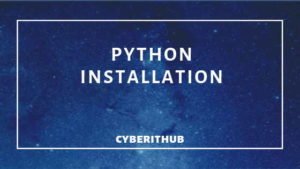
Last metadata expiration check: 0:09: 22 ago on Tuesday 05 March 2019 02:09: 48 PM EST. Updating Subscription Management repositories. Verify installation by typing the type command/ command command: Type the following yum command to install Python 3 on Red Hat Enterprise Linux version 8: You can show detailed information before installing package as well: Sudo yum search python2 | grep 'python2.x86_64' Try any one of the following syntax along with grep command: How to find out Python package names on RHEL 8 Let us see all commands and example in details. Upgrade python 2 in RHEL 8, run: sudo yum upgrade python2.Upgrade python 3 in RHEL 8, run: sudo yum upgrade python3.To install python 2 on RHEL 8, run: sudo yum install python2.To install python 3 on RHEL 8, run: sudo yum install python3.Search for python package in RHEL 8, run: sudo yum search python3.Open the Terminal application or window.The procedure for installing Python 3 on RHEL 8 is as follows: Once these steps are completed, Python should be installed on your CentOS system.Īlso here is python installation on debian server.How to Install Python 3 / Python 2.7 on RHEL 8 Now you can install the packages you want with the below structure.ĭo not forget that in order for the Python packages to work properly, you will need to install Python36u Developer package vis IUS. To manage python, you need to have pip installed. Tutorial on installing Python 3 in CentOS 7ġ - First, insert the following commands to update centos server and install dependencies to install Python.Ģ - To install Python, IUS needs to be installed with the following code.ģ - After installing IUS, now you need to enter the following command to install Python 3.Ĥ - This way Python 3 is installed and you can enter the following command to see the installed version. Please note: all the commands written below must be entered with root access. This way blocks of code are automatically organized. This means that there are a number of identical spacing characters in the beginning of each block's lines, and this number increases in the inner code blocks. Unlike some other common programming languages, where code blocks are defined in the parenthesis, Python uses the character spacing and forwarding of the program to specify blocks of code.


It is open source and was developed in 1991 by Von Hansen in Holland.

Python is a general purpose, high-level, object-oriented script.


 0 kommentar(er)
0 kommentar(er)
